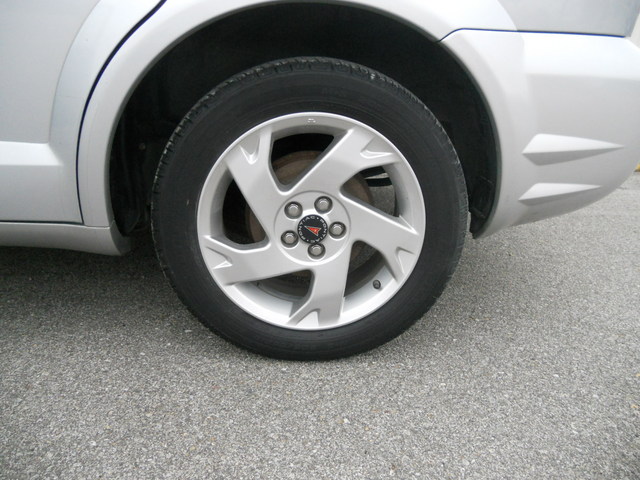
AWD models are more jittery over patchy pavement and freeway expansion joints.

Ride quality varies somewhat according to model and equipment, but it’s acceptable with 16-inch wheels. Premium-grade gasoline is recommended for the GT regular for other Vibes.
2004 PONTIAC VIBE TIRES MANUAL
A Vibe GT with manual transmission averaged 24.8 mpg. AWD versions with 123 hp averaged 25.4 mpg. Test 2WD models with the 130-hp engine and automatic transmission have averaged 26.6 mpg. Heavier AWD models take about 11.5 seconds to achieve that velocity. Pontiac said the base manual-transmission 2WD Vibe needed about 9.5 seconds to accelerate to 60 mph. In fact, 130-hp models have more usable torque at much lower rpm, and feel almost as strong as the Vibe GT and equivalent Matrix XRS. Vibes competed against vehicles as disparate as the Chrysler PT Cruiser, Ford Focus wagon, Subaru Forester, and Volkswagen Jetta wagon.īoth engines need high rpm to deliver decent power–especially the GT version. So were antitheft and navigation systems, a sunroof, and in-dash CD changer. A power window/mirror/lock package, with keyless entry, also was optional. GTs added alloy wheels, a leather-wrapped steering wheel, and special trim.įront-drive Vibes could be equipped with optional 17-inch wheels. A household-type two-prong power outlet sat in the dashboard. Front side airbags were optional curtain side airbags were not offered.Īll Vibes had a separate-opening window in a swing-up tailgate, standard 16-inch wheels, fog lamps, tilt steering wheel, CD player, and air conditioning. GTs included rear disc brakes rather than drums. Antilock braking was standard on AWD and GT models, and optional for the base 2WD Vibe. Unlike the similar Matrix XRS, Vibe GTs were not available with an automatic transmission.ĪWD Vibes were not intended for off-roading, and had the same ride height as their 2WD counterparts.

Vibe GTs held a 180-horsepower engine and a six-speed manual gearbox. Engines in AWD models produced 123 horsepower, driving only an automatic transmission. Front-drive base models had 130 horsepower and either a five-speed manual or four-speed automatic transmission. Vibes came in base trim with front-wheel or all-wheel drive, and in sportier GT form with front-drive only. Vibes were built in California rather than Canada and differed in styling and features, but they used the same Toyota-sourced platform and 1.8-liter four-cylinder engines. Pontiac’s new crossover compact wagon shared its basic design with Toyota’s 2003 Matrix.


 0 kommentar(er)
0 kommentar(er)
